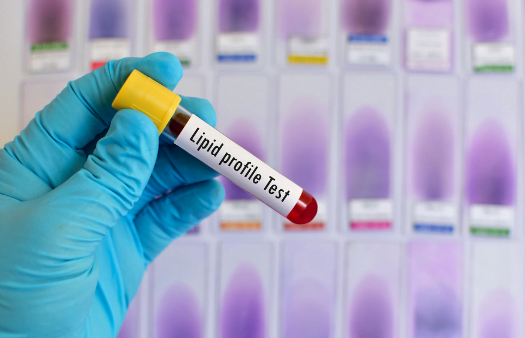Oxidized LDL Biomarker Testing in Preclinical Animal Studies
The Oxidized Low-Density Lipoprotein (ox-LDL) biomarker testing is an essential tool for preclinical animal studies aimed at understanding cardiovascular diseases and their lipid profile components. This testing method focuses on identifying and quantifying oxidized low-density lipoproteins, which are critical in the development of atherosclerosis.
The significance of ox-LDL lies in its role as an early indicator of oxidative stress-induced damage to LDL particles. Oxidation transforms normally benign lipoprotein structures into toxic entities that can initiate and exacerbate cardiovascular disease processes. This transformation is influenced by various factors including diet, lifestyle, genetic predispositions, and environmental exposures.
Preclinical animal studies are crucial in the pharmaceutical industry for drug development, particularly in cardiovascular therapeutics. By assessing ox-LDL levels, researchers can identify potential therapeutic targets, evaluate the efficacy of new drugs, and understand how different interventions impact lipid metabolism. This testing is conducted using a combination of advanced analytical techniques such as ELISA (Enzyme-Linked Immunosorbent Assay), HPLC (High-Performance Liquid Chromatography), and Mass Spectrometry.
The standard operating procedure for ox-LDL biomarker testing in preclinical animal studies involves several key steps. Initially, the animals are selected based on specific criteria relevant to the study objectives, such as genetic background or dietary regimen. Blood samples are then collected from these animals following strict guidelines regarding specimen preparation and handling to ensure accurate results.
The collected blood is processed to separate plasma, which contains ox-LDL particles. This process typically involves centrifugation followed by filtration to remove cellular debris. The isolated plasma is stored under appropriate conditions until analysis can be performed. The actual testing itself involves several steps: sample preparation, calibration of the analytical instruments, and data acquisition and interpretation.
The primary instrument used for ox-LDL quantification in preclinical studies is the ELISA kit, which provides a sensitive and specific method to detect ox-LDL levels. This approach allows researchers to determine baseline values as well as changes induced by experimental treatments or conditions. The results are compared against reference ranges established according to international standards such as ISO 15189 for quality assurance.
The importance of this testing cannot be overstated, especially in the context of cardiovascular research where understanding the role of ox-LDL is fundamental. By providing precise measurements of these biomarkers, it becomes possible to develop more effective treatments and preventive measures tailored specifically towards managing or reversing oxidative stress within the body.
Applied Standards
The Oxidized LDL Biomarker Testing in Preclinical Animal Studies adheres to several key international standards that ensure accuracy, reliability, and consistency across different laboratories. These include:
- ISO 15189: Quality requirements for the competence of medical laboratories
- ASTM E2647-13: Standard practice for preparing and submitting biological samples containing low-density lipoproteins to a laboratory for measurement of oxidized low-density lipoprotein (ox-LDL)
- EN ISO 9001: Quality management systems
These standards ensure that all aspects of the testing process—from sample collection to final reporting—are conducted with utmost precision and adherence to best practices. Compliance with these guidelines not only enhances the credibility of research findings but also contributes significantly towards maintaining high ethical standards in scientific investigation.
Industry Applications
The application of Oxidized LDL Biomarker Testing extends beyond mere academic interest; it plays a pivotal role across various sectors within the broader healthcare and pharmaceutical landscapes. For instance, in drug discovery and development stages, this testing helps identify potential therapeutic candidates that target ox-LDL pathways or modulate lipid metabolism.
In addition to basic research, the data obtained from such tests can inform clinical trial designs by providing insights into biomarker levels before and after treatment administration. This information is invaluable for assessing drug efficacy and safety profiles early in development cycles. Furthermore, it aids regulatory bodies like the FDA or EMA in evaluating new products based on robust scientific evidence.
The results from these tests also contribute to personalized medicine approaches by offering tailored therapies according to individual patient profiles regarding their lipid status. Finally, understanding ox-LDL dynamics through preclinical studies supports broader public health strategies aimed at reducing cardiovascular risk factors globally.
Environmental and Sustainability Contributions
The implementation of Oxidized LDL Biomarker Testing in Preclinical Animal Studies aligns closely with sustainability goals by promoting efficient use of resources while minimizing environmental impact. By optimizing experimental designs and reducing the number of animals used per study, this testing method supports ethical considerations for animal welfare.
Moreover, adopting advanced technologies like ELISA kits ensures minimal waste generation during sample processing stages. Additionally, adherence to strict quality control measures helps prevent errors that could lead to unnecessary repetition or wastage of resources. These practices contribute positively towards achieving sustainable development objectives within the healthcare industry.





